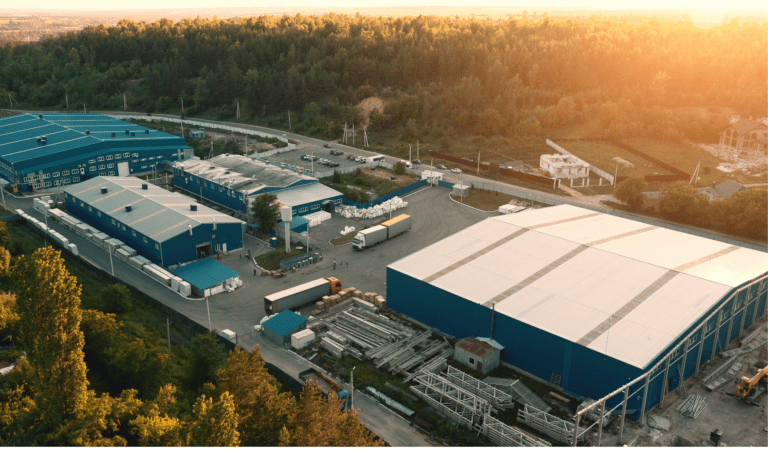Staying compliant with laws and regulations can be overwhelming and seem like a hassle. However, fleet companies and the Federal Motor Carrier Safety Administration have common interests; getting cargo transported safely and reaching economic growth. Cooperation and compliance are essential for the fleet industry to prosper, and the two entities can work together to achieve the safe transportation of goods.
What is a DVIR
A Driver Vehicle Inspection Report (DVIR) is a mandatory requirement set forth by the Department of Federal Motor Carrier Safety Administration (FMCSA) to conduct a pre-trip and post-trip inspection of commercial vehicles.
A commercial vehicle can not be driven unless the driver indicates that the following parts are in good working order.
- Service brakes, including trailer brake connections
- Parking (hand) brake
- Steering mechanism
- Lighting devices and reflectors
- Tires
- Horn
- Windshield wipers
- . Rear-vision mirrors
- Coupling devices
- Wheels and rims
- Emergency equipment
DOT and FMCSA Compliance
The Department of Transportation (DOT) and the FMCSA have common missions to prevent as well as decrease the number of crashes, injuries, and fatalities. Both departments work to create safety awareness, guidelines, laws, and regulations while aiming to increase economic growth.
Compliance with DOT and FMCSA regulations is vital to keeping a fleet company running. The consequences of not complying with DOT and FMCSA regulations will result in penalties, an untrustworthy business, and unsafe driving.
What is the Department of Transportation (DOT)
The DOT is a federal agency that is committed to encouraging economic growth and safety in the United States transportation system. Safety includes aspects such as human trafficking prevention and regulating all sectors of transportation.
Mission:
“To deliver the world’s leading transportation system, serving the American people and economy through the safe, efficient, sustainable, and equitable movement of people and goods.”
Strategy:
- Safety
- Economic Strength
- Equity
- Climate and Sustainability
- Transformation
- Organizational Excellence
What is the Federal Motor Carrier Safety Administration (FMCSA)
Unlike the DOT, FMCSA does not focus on all sectors of transportation but primarily aims to improve the safety of commercial motor vehicles. Both agencies are significant but for the fleet industry, DVIRs are enforced by the FMCSA.
Mission:
“Reduce crashes, injuries, and fatalities involving large trucks and buses.”
Strategy:
- Develop data-driven safety regulations
- Enforcement
- Safety awareness
- Collaboration
Why is a DVIR Necessary
A DVIR is required to detect maintenance issues before traveling to prevent an accident or a vehicle from breaking down during the trip.
Time and Money
The real cost of vehicle downtime is not just the cost of the repair.
- Demand for other vehicles
- Depreciation on other vehicles
- Driver downtime pay
- Decrease in uptime
Completing a DVIR is not as time-consuming as preventable breakdowns. As drivers become more experienced the more efficient those drivers will become at completing an inspection. DVIR is a type of insurance for fleet companies. Completing the inspections saves time that would have been wasted and increases uptime in fleet vehicles.
Delay Prevention
Filling out a DVIR is not only the law but ensures company prosperity. If a fleet vehicle breaks down with cargo, the breakdown can delay when the cargo reaches the client. Potentially costing the company customers and money. A DVIR assures that the vehicle is not only safe for the driver but reliable for the customer.
How Often does DVIR Occur and When
A DVIR must be filled out per vehicle used by the driver. So if a driver uses two fleet vehicles, for that driver to be in compliance with FMCSA guidelines the driver must fill out a DVIR for both vehicles. If there are two drivers in one vehicle only one DVIR will need to be filed under the circumstances that both drivers agree that the vehicle could impair safety or lead to a breakdown. If there is a defect both drivers must agree on those defects. If there are no defects it is recommended to still fill out a DVIR but the DVIR only needs to be reported if a defect is present.
What should be included in the DVIR Form
A DVIR can be as detailed as a fleet company chooses to make the DVIR. The DVIR has certain requirements and as long as those details are included in the DVIR, the driver will be in compliance with the FMCSA. However, it is recommended that drivers fill out a DVIR with an inspection checklist to verify that every step of the inspection is completed.
The DVIR requires
- Date and time of the inspection
- Carrier name
- Fleet unit number
- License plate number
- Driver signature
- Mechanic signature
- The next vehicle driver’s signature (reviewing the driver’s signature)
Violations and Penalties
Violating DOT or FMCSA guidelines not only leads to unsafe risky behavior but can be costly. Failure to file DVIRs can result in expensive penalties for the driver and the fleet company. The fines and penalties range from $1,270 to $15,420 dollars. If a driver fails to complete and sign a DVIR the fine will be around $1,270. Providing false information or records of a DVIR will be around $12,700, this includes lying about defects. Failure to make repairs from the DVIR will result in a fine of around $15,420. Penalties are costly and if a company continues to neglect FMCSA guidelines for a DVIR the costs will only become more expensive.
How to Digitalize Reporting
Digitalizing DVIRs can be greatly beneficial. DVIR reports must be kept for at least 3 months. Digital maintenance reports make storing and accessing those reports much more feasible. Holding on to paper reports can easily lead to misplacement, disorganization, and frustration. Vehicle fleet maintenance software makes reporting much more efficient.
Whip Around
Whip Around is a complete fleet maintenance software platform that optimizes the fleet inspection process. There are a variety of template DOT compliance forms to make reporting easier. Not only is reporting easier with fleet maintenance software but preventative maintenance along with other maintenance is made simple.
- Increase accountability
- Eliminate unnecessary paperwork
- Enhance reporting
- Meet compliance requirements
- Keep employees safer
Among every aspect of the fleet industry safety should always be the top priority. Without following safety regulations prosperity in the fleet industry is unobtainable. If safety is not encompassed in workplace culture then other priorities will fall short as well. Compliance with laws and regulations is essential to facilitating safety in the fleet industry.




